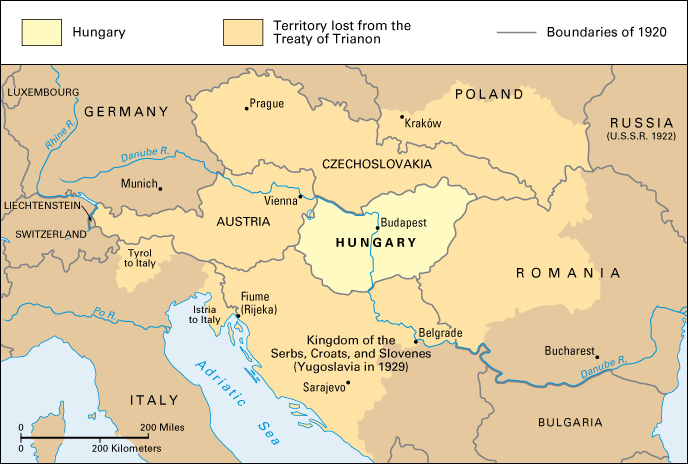Trianon, << TREE uh non or tree ah NAWN, >> Treaty of, was signed by Hungary and the Western Allies after World War I (1914-1918). It was signed in the gallery of the Grand Trianon, a palace at Versailles, France, on June 4, 1920. The treaty punished Hungary severely for its role in the war as part of Austria-Hungary, even though a new Hungarian government had declared Hungary independent of Austria in 1918. The United States, which signed the treaty but never ratified it, made a separate peace with Hungary in 1921.

The Trianon treaty stripped Hungary of more than two-thirds of its territory. The country’s population dropped from about 21 million to approximately 8 million, and the nation was left with no seaports. Hungary’s complaints against the treaty brought few results.
The treaty forced Hungary to recognize the new boundaries of Austria, Czechoslovakia, Romania, and what became Yugoslavia. Hungary had to give up its claims to the port of Fiume and was allowed to keep an army of only 35,000 men. All Hungarian merchant ships had to be surrendered to the Allies. Hungary lost Slovakia, Transylvania, and Croatia to neighboring countries. About 3 million Magyars were separated from their fellow Hungarians.
